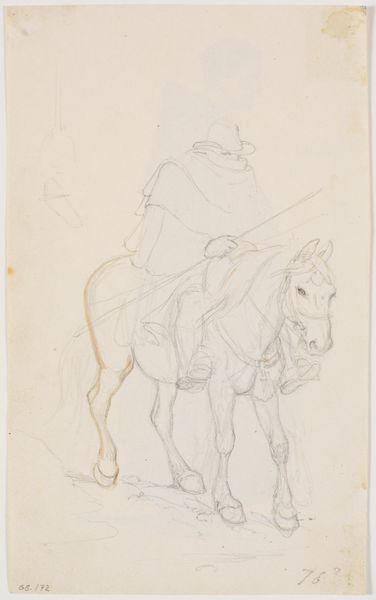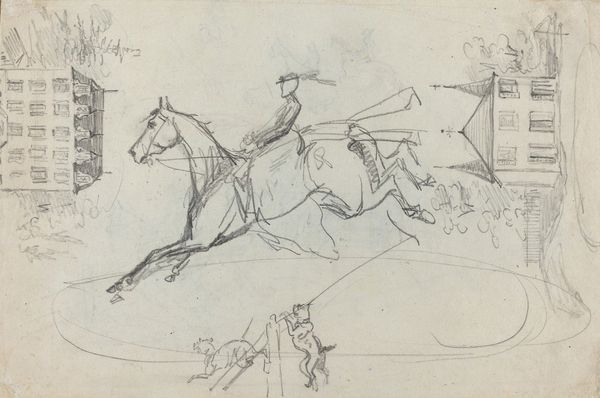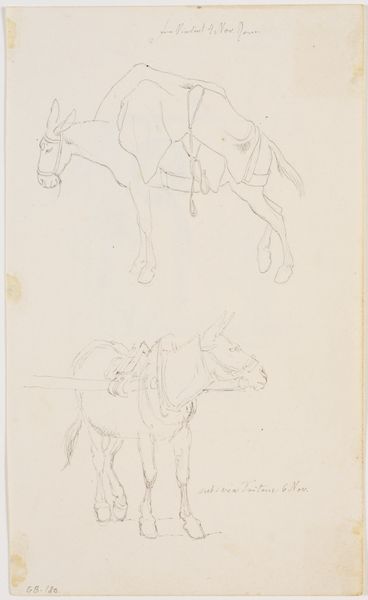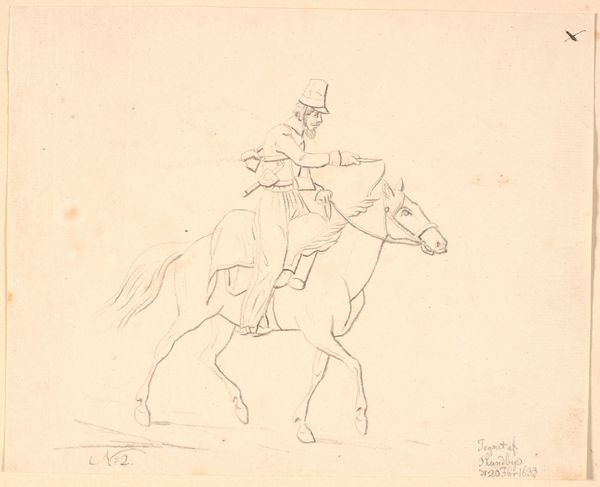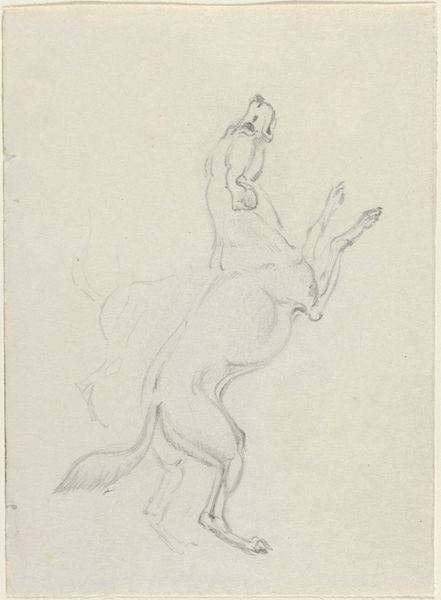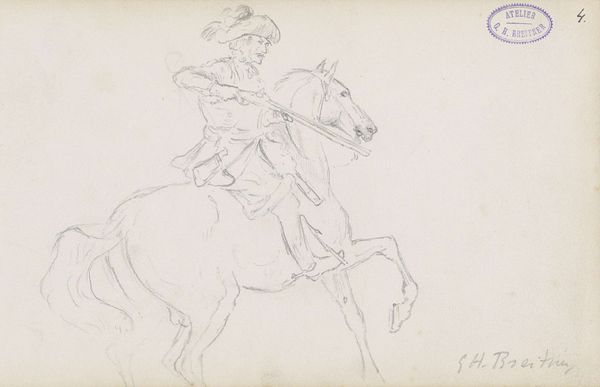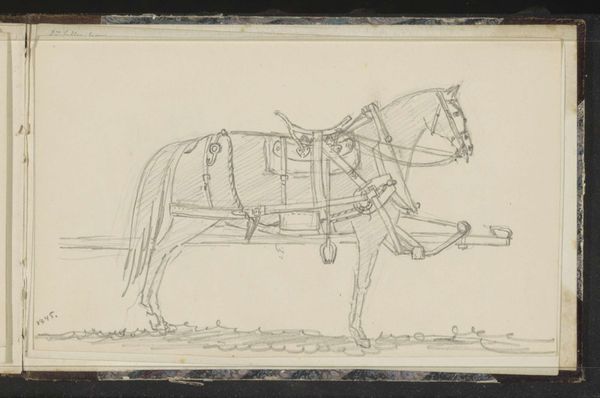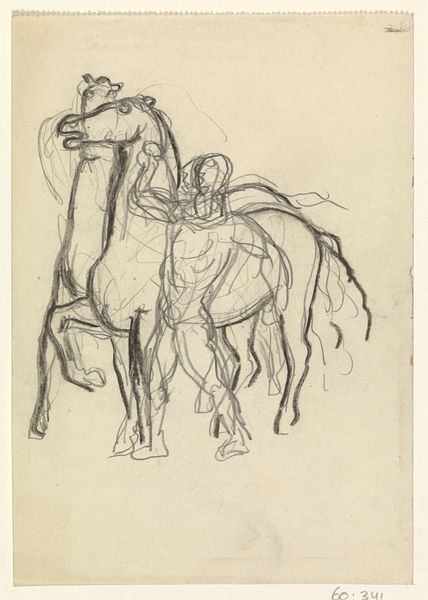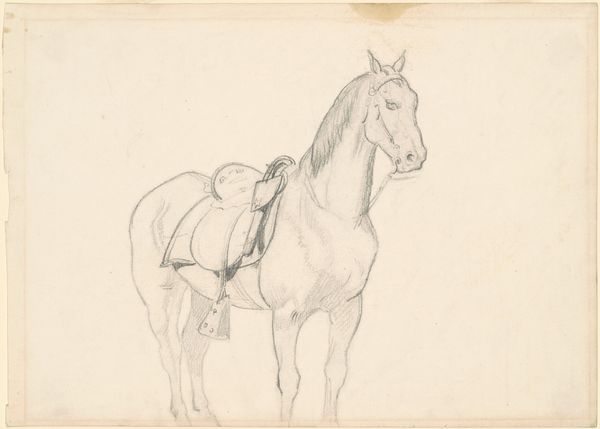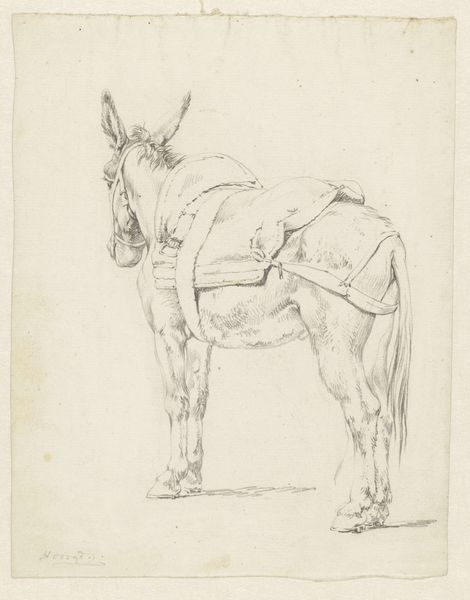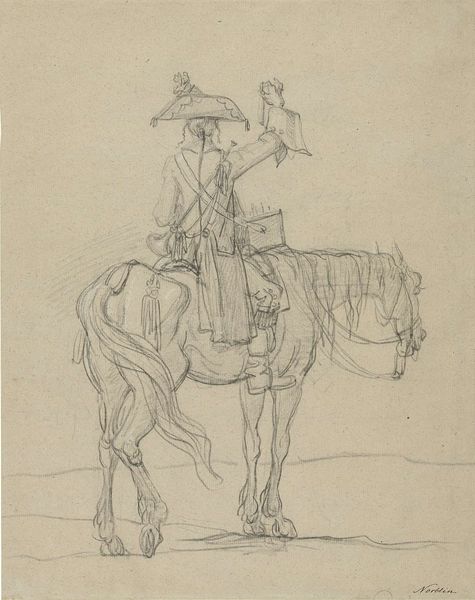
Copyright: Rijks Museum: Open Domain
Curator: We’re looking at "Vrouw op een ezel", or "Woman on a Donkey," a pen drawing by Isaac Israels created sometime between 1875 and 1934. It's part of the Rijksmuseum's collection. Editor: The quick, sketchy lines give it such an immediacy! It almost feels like a fleeting moment captured on the page. There's a definite sense of movement; I can practically feel the donkey ambling along. Curator: Israels was deeply embedded within the art scene of his time. We must consider the burgeoning public interest in informal portraiture that flourished during the late 19th and early 20th centuries, including representations that focus on common folk. How might it reflect evolving perceptions of class and identity during this period? Editor: Right, and I'm drawn to the contrast here. The delicate linework suggesting the woman's figure against the coarser depiction of the donkey raises questions. Was Israels commenting on gender roles or perhaps the different societal expectations placed upon the woman versus the beast of burden? The composition subtly prompts a feminist reading. Curator: That is an astute assessment. Furthermore, how do societal expectations frame the viewer's response to this piece, even today? There's a tension between aesthetic appreciation and critical self-awareness. Did the art world marginalize images such as this due to their informal nature and seeming lack of high-art seriousness, and, if so, how did this affect the artist's public perception? Editor: Absolutely, the power dynamics within the art world itself definitely impact an artwork's interpretation and trajectory. Also, considering Israels' artistic milieu, perhaps this study offered a counterpoint to prevailing academic styles, thereby asserting the dignity and worth of everyday life as legitimate subject matter for art. Curator: An excellent observation; and as we re-evaluate the social landscape from past epochs, this Israels piece now has renewed significance that helps provide valuable perspectives concerning how historical structures and aesthetic hierarchies have formed and perpetuated biases. Editor: Reflecting on this drawing, I'm left pondering how even seemingly simple sketches can be profound cultural documents—offering insights into the past and prompting dialogue about the present. Curator: I completely concur. By probing the work and socio-historical contexts of Isaac Israels, we start to appreciate art's unique capacity for reflection, provocation, and ultimately transformation.
Comments
No comments
Be the first to comment and join the conversation on the ultimate creative platform.
